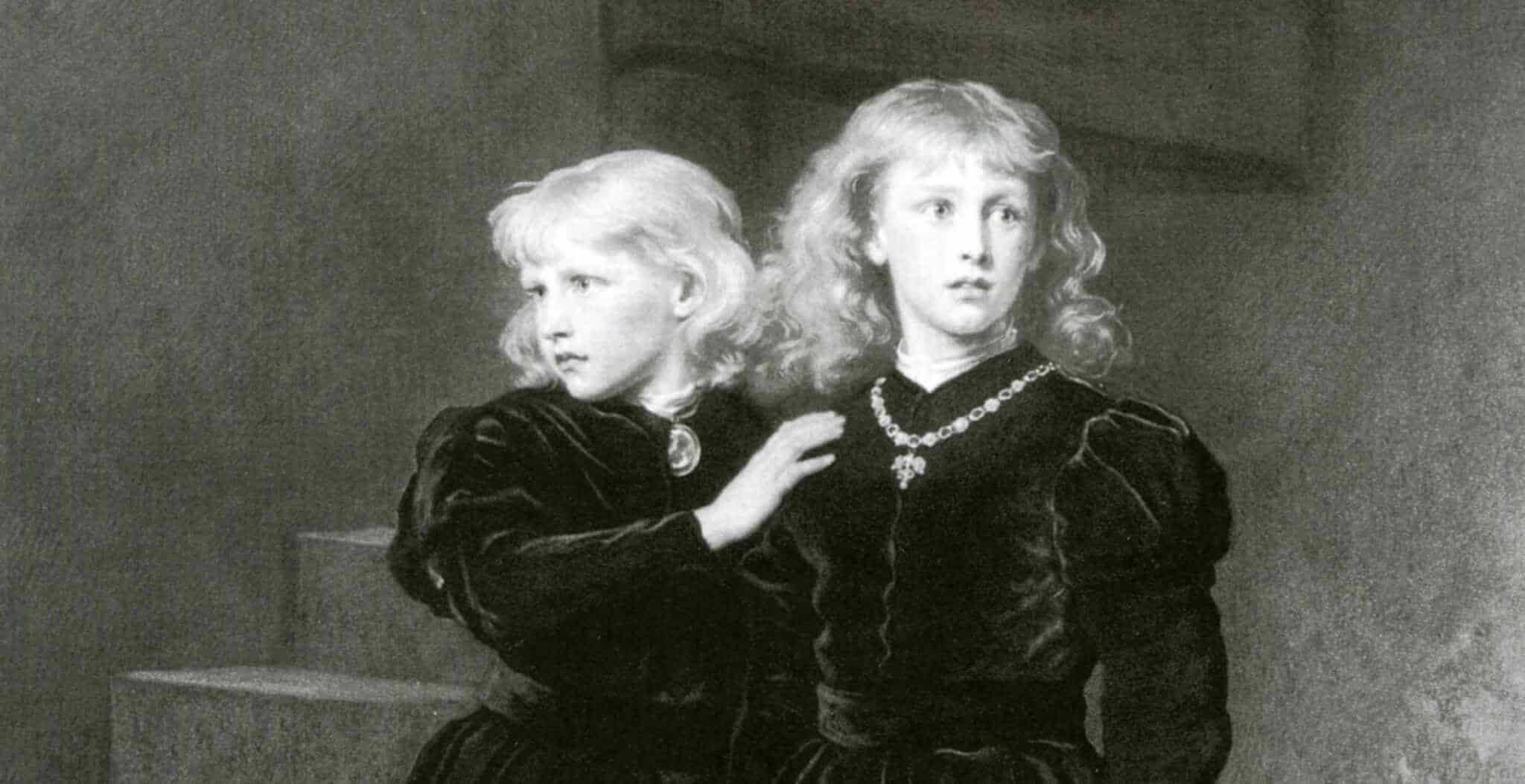In one of England’s most enduring historical enigmas, two young princes vanished without a trace. Although evidence remains limited, the discovery of two skeletons in the Tower of London in 1674 has captivated historians and fueled theories for centuries. These remains are widely believed to belong to Edward V and his younger brother, Richard, Duke of York, who were last seen in the tower in 1483. The mystery of their fate continues to raise questions about royal intrigue, alleged betrayal, and the dark side of power.
Table of Contents
ToggleThe Discovery of the Skeletons
In 1674, laborers working near the White Tower at the Tower of London unearthed two small skeletons. As part of a project dismantling sections of the Tudor and Medieval Palace, workers found these remains inside a hidden chest approximately ten feet beneath a staircase. According to John Knight, the chief surgeon to King Charles II, the size of the bones matched the ages of the missing princes, believed to have been thirteen and eleven at the time of their disappearance.

However, the discovery location remains a point of contention, with some suggesting the bones were found outside the White Tower. Despite this debate, the find was significant enough to warrant royal attention. Initially disregarded, the bones were later formally recognized as the potential remains of the princes and were eventually entombed in a marble urn by order of Charles II, placed in Westminster Abbey among royal relics.
Who Were the Princes in the Tower?
The “Princes in the Tower” refers to Edward V and his brother, Richard, Duke of York, sons of King Edward IV and Queen Elizabeth Woodville. After the death of Edward IV, young Edward was briefly proclaimed king, with his uncle, Richard, Duke of Gloucester (later King Richard III), serving as Lord Protector. However, in a series of political maneuvers, Richard III declared the boys illegitimate and took the throne for himself. The young princes were last seen alive in the Tower of London in 1483, leading many to suspect they were murdered under orders from their ambitious uncle.

Historical Theories and Controversy
The fate of the princes has been a matter of speculation since the 15th century. Theories abound, with many suggesting they were either secretly murdered or quietly sent into exile. Some historians believe Richard III ordered the assassination to secure his throne, a theory bolstered by his swift claim to the crown. Others argue that the princes might have been alive well into adulthood or that other high-ranking figures, such as Henry Tudor (later Henry VII), may have had a role in their disappearance.
The discovery of the skeletons in 1674 reignited interest in the case. If indeed these remains were those of the princes, it would corroborate the theories of their murder within the Tower. However, the absence of definitive forensic analysis leaves their true identity open to question.
The 1933 Examination and Lingering Questions
In 1933, a reexamination of the bones led to the discovery of a jawbone and molar believed to belong to Richard, Duke of York. Photographs taken during this examination stirred public intrigue and led to renewed calls for a formal investigation. However, despite advances in forensic science, the bones remain undisturbed in Westminster Abbey, with no DNA testing permitted to this day.
The reluctance to test the remains has left the case unresolved. Many historians and scientists argue that DNA analysis could provide the final piece to this centuries-old puzzle, yet royal approval has not been granted. Without such evidence, the mystery surrounding the princes remains intact, adding to the enduring intrigue of the tale.
The Legacy of the Princes in the Tower
The mystery of the “Princes in the Tower” transcends the specifics of the case, symbolizing the dangers and ambitions tied to royal succession in medieval England. It is a chilling reminder of how political power can breed betrayal, even within a family. The potential fate of Edward V and Richard of York raises questions about historical justice, the influence of narratives in shaping royal legacy, and the blurred lines between fact and fiction in historical records.
The disappearance of the princes continues to intrigue historians, with the truth still elusive. For now, the tale of the princes serves as a fascinating chapter in England’s royal history, a story marked by mystery and the shadows cast by a powerful dynasty.

